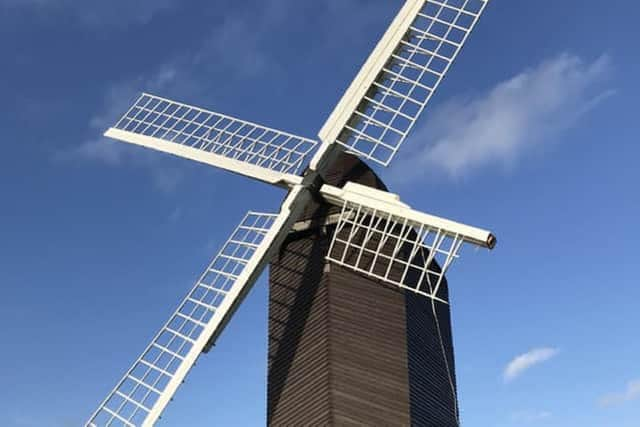Beneath the Hill: A short history of Aylesbury Vale village Brill
and live on Freeview channel 276
Growing up in Brill, I knew it was steeped in history. The hill itself seemed gargantuan and prehistoric, towering above the neighbouring villages, it felt significant.
My dad would often wax lyrical about how our undulating hills formed the inspiration for Tolkien’s Hobbiton and when we traversed the common, he would scuff his shoes in the soil noting “clay”, “flint”, and uttering other old things. He’d tell me how Edward the Confessor hunted here, with other English kings lodging thereafter until The Civil War when this mythic palace was destroyed.
Advertisement
Hide AdAdvertisement
Hide AdIt wasn’t until I was face to face with an anthropomorphic jug in The Ashmolean Museum, that I realised all the tales were true and Brill really was an ancient, important centre of material production and royal exploits. Perhaps everyone already knew, but I wanted to uncover more and shed light on the interesting, if slightly anecdotal, legacy of this great village.


Brill’s story as we know it begins thousands of years ago. At over 600ft above sea-level and covered in forest, it would have seemed like the perfect place to settle. There is very little evidence to confirm Brill’s diaspora at this time, although flint fragments would suggest an established community during the Mesolithic period. However, a secure population certainly emerges by the Iron Age, as suggested by a discovery of pottery in Brill’s churchyard.
‘Brunhelle’, or ‘Bruhulle’, as it was later known, transformed as a centre of pottery production, sourcing and extracting clay from its soil. Evidence of this emerges in the 11th century, with mentions of ‘Potter’ surnames in Brill and surrounding Boarstall areas, as well as potential kilns, previously described as cremto, cremeto, cremento, or cremerto, an abbreviation of crematorium. In the 12th century, this impression seems clearer, with references to a ‘combustio de Bruhull’ in 1202, but it is not until the latter 13th and early 14th century that there appears to be regular activity. By the 15th and 16th centuries, Brill’s pottery production was well established, and this continues, if more sporadically, into the 18th century with a switch to brick production in the 19th. Tiles, decorative domestic items, among other products, were circulated to surrounding areas and further afield into Gloucestershire, Lincolnshire, Northamptonshire, and Cambridgeshire.
Another intriguing aspect to the village’s history was its relationship to The Crown. In 1086, the Domesday Book references a ‘manor’ belonging to King Edward, or Edward the Confessor. Historians have speculated on the size and grandeur of this ‘manor’, also referred to be contemporaries as a ‘hunting lodge’, however, little to no evidence of its original scale survives.
Advertisement
Hide AdAdvertisement
Hide AdWhat we do know is that it was visited by Norman and Angevin kings William I, Henry I and II, who signed documents from Bruhellum or Bruhellam and it remained in royal hands until 1337, when it was transferred to John de Moleyns. Renovations to the manorial complex occurred between 1179 and 1247, in and around the original building, replacing, and adding to the Norman residence. In 1209-11, a chapel was added, dedicated to Saint Edmund, and historians have speculated its location could be the site of Brill Church today. There are three possible main sites for the manor, one of which is suggested by the New College Map (1591) as being south of the green, adjacent to the church.
Custody of Brill Manor changed several times in the 16th century, according to Victoria County History and it was supposedly a garrison during The English Civil War, occupied both by Royalists in 1643 and Parliamentarians in 1644-5, where the lasting structure was potentially destroyed. It is not until the 19th century that we have smatterings of references to a ‘palace’ or ‘castle’, with Lipscomb noting the earthwork next to the church as signalling the site of a moat, colloquially referencing the field opposite as the ‘king’s field’. Alternatively, this could be a Civil War fortification. Today, the manor follows the descent of Boarstall Manor, belonging to Sir Henry L. Aubrey Fletcher.
In more recent times, Brill has witnessed other historical events, notably the First and Second World Wars and the more bizarre ‘Great Train Robbery’. Nowadays its legacy is one of country walks and hearty pub lunches, but beneath the hill remains knowledge of ancient times, of those early humans, old kings, and of great ingenuity.